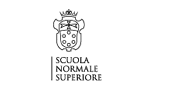poster: Getting inspired by chromosome organization in eukaryotes: Ising model on polymers with complex topologies
speaker: Andrea Papale (Sissa)abstract: Each chromosome lies in the nucleus of eukaryotic cells and is made by a single filament of chromatin, a complex of DNA and proteins. Inside the nucleus, there exist regions where chromosomes condense into “territories” and others without chromatin (“interchromatin” compartments). Moreover, chromatin is not randomly distributed: in general, heterochromatin (a tightly packed form of chromatin which contains inactive genes) stays close to the nuclear periphery and euchromatin (a gene-rich, lightly packed form of chromatin) is concentrated toward the nuclear interior. Several models 1,2 use the state of chromatin as internal degree of freedom for polymers. I will discuss how to build an Ising model using different chromatin states on lattice polymers with complex topologies. These are inspired by bio-polymers 3 and can be mapped to real systems like chromosomes or supercoiled structures of DNA. In particular, I will show which of those model polymers exhibit a phase transition.
1 D. Jost, P. Carrivain, G. Cavalli, C. Vaillant, Nucleic Acids Res. 42, 15 (2014).
2 J. Olarte-Plata, N. Haddad, C. Vaillant, D. Jost, Phys. Biol. 13, 2 (2016).
3 Rosa A., Everaers R., J.Chem. Phys. 145, 164906 (2016)
<< Go back

